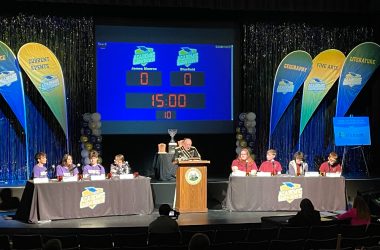By BISHOP NASH
The Herald-Dispatch
HUNTINGTON, W.Va. — Books yet unwritten and lessons still ongoing will almost certainly remember Aug. 15, 2016, as a rock-bottom moment when generations to come reflect on Cabell County’s struggle to contain the opioid epidemic of the current day.
Though overdoses had become a daily, nearly hourly, emergency call for first responders, no one could have predicted the numbers that would grab national headlines by nightfall: 26 overdoses, six hours, and all from one batch of pink heroin later found to have been mixed with fentanyl, an opioid used as part of anesthesia to prevent post-surgery pain, and carfentanil, an elephant sedative 100 times more potent than fentanyl.
Calls began flooding Cabell County 911 around 3:30 p.m. and continued until around 9 that Monday evening around Marcum Terrace and nearby St. Louis Avenue. Twelve doses of naloxone were used to revive victims, three of those on one patient.
“You’re lucky no one died,” Chambers told Griggs during his sentencing in April. “But that’s largely thanks to (first responders) that saved their lives.”
Two overdose deaths were initially linked to the outbreak, but Chambers ruled neither could be tied to Griggs’ batch.
Not only could it have been worse, but the outbreak again shined a harsh spotlight on the area’s already well-known opioid epidemic, said Gordon Merry, Cabell County EMS director. Rather than ignore the issue, Merry praised efforts by City Hall, police, fire and the health department to keep Aug. 15, 2016, from being buried in shame and hindsight.
The problem, Merry added, isn’t a Huntington or West Virginia-specific issue, despite the city finding itself in the headlines as a result. Similar mass overdose outbreaks have popped up in cities across the region, including Cincinnati, Columbus, Dayton and Akron in Ohio and some communities in Kentucky.
What sets Huntington apart, he said, has been the city’s willingness to face its problem head-on.
“This is not unique to Huntington, West Virginia or Cabell County. This is across the United States. Others areas I don’t believe talk about it; I think they try to hide it,” Merry said. “All things said, I think we’re no worse off than any city in the United States.
“I just think we were the first (city) that it really hit and was discussed.”
The day was also the catalyst for the creation of Huntington Police’s Overdose Initiative, organized toward the longtime goal of turning overdose responses into criminal cases against dealers, Huntington Police Chief Joe Ciccarelli said. The program blends intelligence gathered by patrol officers, uniformed officers normally the first to arrive at overdose calls, which is then passed to the department’s Special Investigations Bureau, comprised of detectives building long-term cases against drug traffickers.
On Aug. 15, patrol officers collected information from overdose victims which eventually implicated Griggs, an Akron native operating in Huntington, within a few days. At the time, Akron was also plagued with similar mass overdose outbreaks, Ciccarelli said.
Cameras maintained in the Marcum Terrace area caught Griggs dealing the drug from 2:09 to 3 p.m., within an hour after the first overdose calls began.
The outbreak was examined by the West Virginia Department of Health and Human Resources’ Bureau for Public Health in a January 2017 report which outlined three potential courses of action for intervention: surveillance, healthcare system response and community respond.
For the surveillance aspect, the department advised a statewide system to accrue data related to nonfatal overdose deaths should be developed. No such system exists at the statewide level, though similar data has been collected locally by the Huntington Mayor’s Office of Drug Control Policy.
For the healthcare system response, the report states “the continuum of care for opioid overdose response and treatment should not stop at the point of resuscitation by first responders,” meaning health professionals should take greater steps toward persuading overdose victims to participate in long-term recovery programs. The report states none of the Aug. 15 outbreak victims was referred for further treatment.
For community response, the department stresses the need for greater access to substance abuse intervention programs at the neighborhood level, particularly areas prone to heavy drug use.
Huntington has since applied for grant funding to staff “quick response teams” for overdose responses, a method used in cities like Cincinnati. Following each overdose, a team consisting of an addiction counselor, a paramedic and a police officer would visit the home within a week. The method is designed with the hope of maintaining a relationship with the person until they can enter a recovery program.
See more from The Herald-Dispatch




